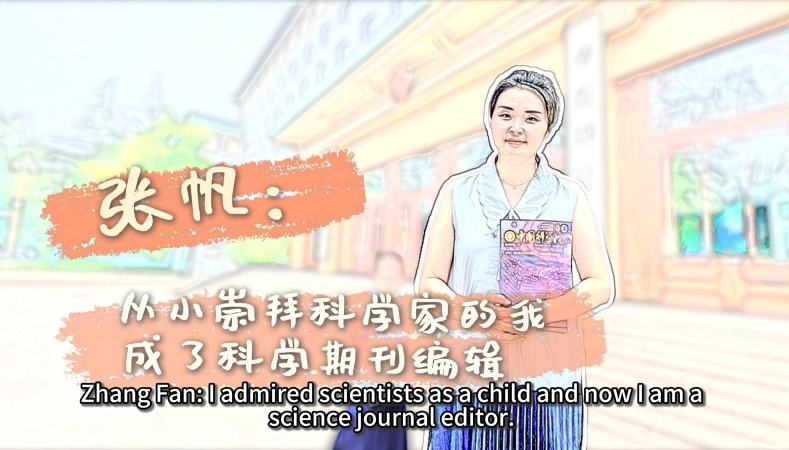STB: A Win-win Mode for Postgrads and Farmers
A student from a Science and Technology Backyard (STB) in Quzhou county in north China's Hebei province explains corn planting knowledge to a local farmer. (PHOTO: XINHUA)
By LU Zijian
Science and Technology Backyard (STB), a new model for modern agricultural science and technology innovation, social service and personnel training, has yielded more benefits than expected.
Over the past decade, there have been more than 800 supervisors from and outside universities, along with 1,500 postgraduate students engaged in the establishment and operation of STBs. More than 113 categories of technical regulations and 284 innovative technologies have been created in response, while more than 200,000 farmers were trained.
What is STB?
Basically, STB is an innovative approach for the cultivation of postgraduate students who study agriculture.
The university or research institute sends the students to the frontline of agricultural production, and the students focus on solving the practical problems that occur in the production after they have acquired the theoretical knowledge.
STB is not like a short term project or summer school, but requires proper time and effort.
According to a guideline issued this March, each STB should be assigned at least one postgraduate supervisor in agriculture, who should have a high academic level and strong practical abilities as the senior expert. In addition, at least two postgraduate students in agriculture should be allocated to each STB, and stay for no less than 120 days per year. Each STB should focus on a major agricultural product in a county and research on the practical problems arising in the production.
There are now over 300 STBs established in 29 provinces and autonomous regions within China from more than 30 universities, covering 135 types of agricultural products in nine industries, including food crops, cash crops, breeding, forestry and food processing.
"STB has become a four-in-one platform of government, enterprises, farmers and researchers after practice of more than a decade," said Zhang Fusuo, academician at the Chinese Academy of Engineering, who set up the first STB in Quzhou county, Hebei province with his colleagues.
Nurturing specialists
As the pioneer in building STB, China Agricultural University (CAU) specifically designed a three-year STB Master program, and students must stay in the rural areas for two years, completing the research tasks given by their mentors in accordance with real situations they may encounter.
According to Chen Fanjun, an official at the graduate school of CAU, the study period of three years is decided based on the long production cycle of agriculture. The growth cycle is not stable after only one season, said Chen, adding that the two-year cycle could achieve stable rules.
Led by CAU and organized by Henan Agricultural University (HENAU), the STB in Yuzhou city in Henan province has focused on wheat and corn for the past ten years, including the lodging resistance of strong gluten wheat and specific fertilizer for sweet-waxy maize.
"I did research on technical problems in the planting of wheat for my master thesis," said Tian Peiyu, head of the STB in Yuzhou and Master's student at HENAU. Tian's research put emphasis on the influence of nitrogen fertilizer rates on the yield, quality and lodging resistance of wheat with different gluten types.
"The papers published by students working here before me were all closely related to problems in agricultural production," said Tian.
Facilitating rural revitalization
Another important function of STB is to help generate better outcomes in agricultural production, thus creating a better life for farmers.
Fu Wen, former head of the STB in Yuzhou and graduate of HENAU, said that the STB in Yuzhou conducts dozens of training programs in agricultural techniques, including the management of wheat in spring and high-yield cultivation of summer corn. More than 420 times of training for about 50,000 farmers, solving more than 3,000 practical problems for farmers, while the area of farmland which benefited from technical guidance given surpassed five million mu (1 mu equals 666.7 square meters).
Li Wentao, a farmer from Kangcheng village in Yuzhou, benefited a lot from the STB. He contracted 120 mu of farmland through land transfer and by adopting the learned fertilizing techniques, he managed to harvest over 600 kg of wheat per mu. This was done with less than 50 kg of fertilizer for the first year, a huge leap forward from the previous yield of 400 kg of wheat per mu with 60 kg of fertilizer.
Suggested by the STB, Li also planted millet in part of his farmland. The yield was high and so was the price.
In July, another guideline was released to support the construction of 780 STBs of 68 universities and research institutes, and to advance sci-tech support of agricultural production.



